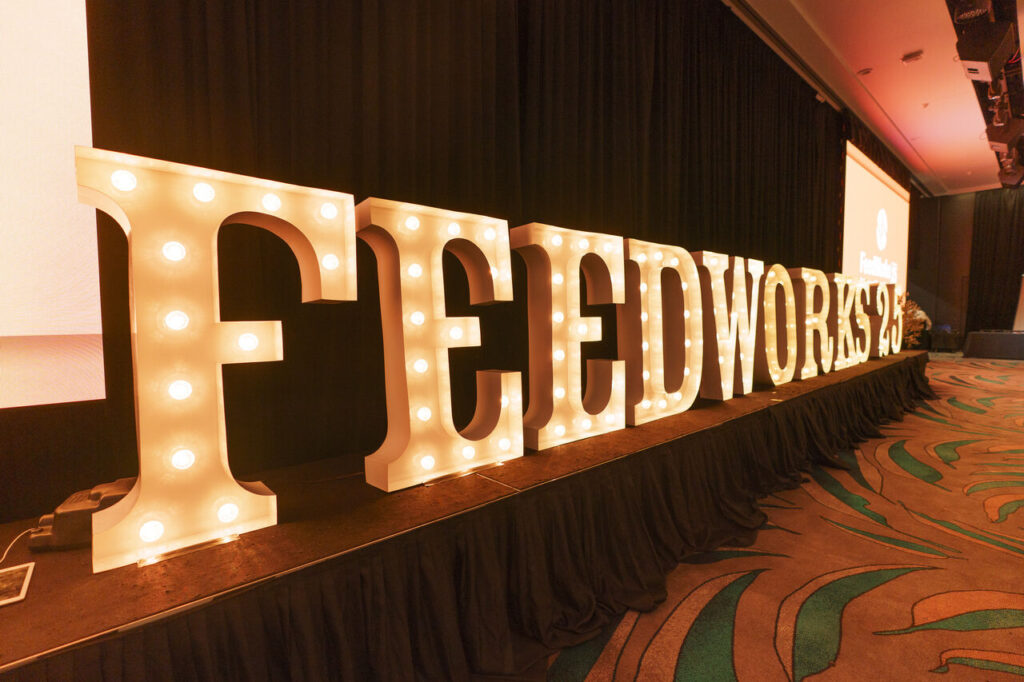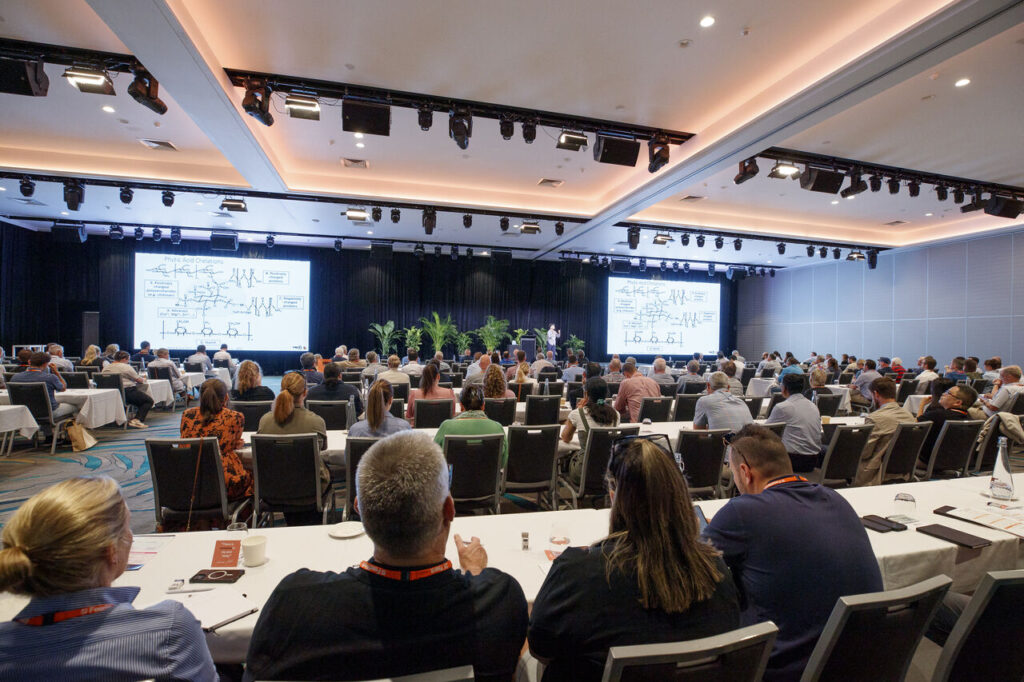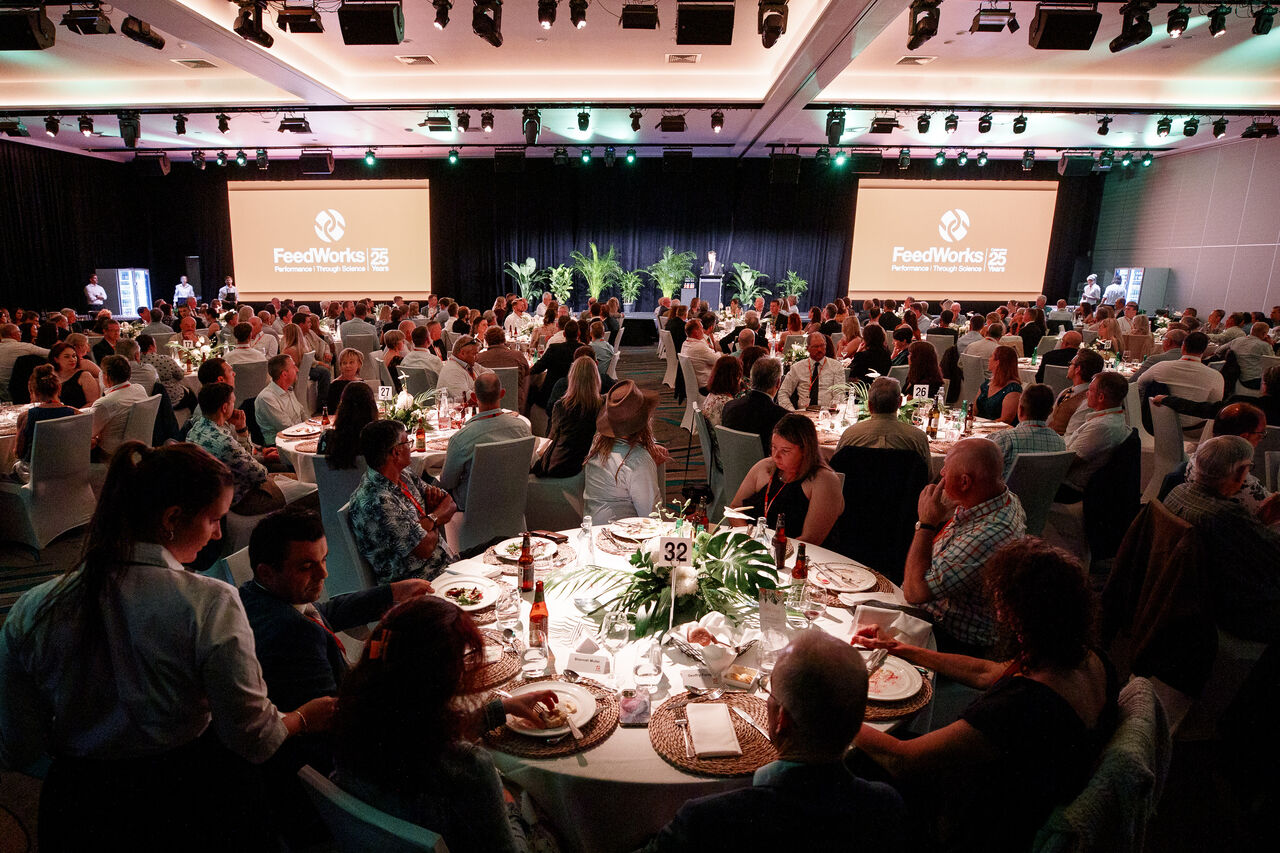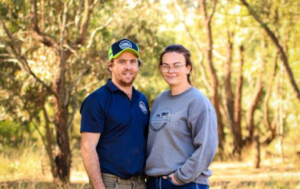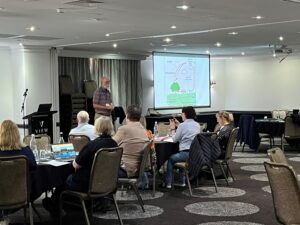In mid-September 2024, professionals from across the animal nutrition industry gathered at the beautiful Twin Waters Resort on the Sunshine Coast for the Feedworks Conference. With a robust lineup of expert speakers and thought-provoking panels, the event offered an in-depth look at the latest research and innovations in monogastric and ruminant nutrition. It was also a chance to celebrate 25 years of Feedworks, what an amazing achievement. Congratulations to Malcom and the team.
The conference began on Wednesday evening with welcome drinks and an engaging panel discussion titled “The Good, The Looks Good, and The Maybe Good.” Moderated by Dr. Kristy DiGiacomo, the panel featured esteemed experts like Professor Roselina Angel, Professor Mike Allen, and several other leaders in the field. The discussion revolved around emerging trends in animal nutrition and offered a balance of optimism, scepticism, and cautious curiosity, setting the stage for the presentations that would follow over the next two days.
Day 2 saw a packed agenda, starting with a keynote by Professor Roselina Angel from the University of Maryland. Her presentation, “New Insights into Monogastric Nutrition,” covered critical topics such as calcium, phosphorus, and Vitamin D requirements for optimising animal health. Professor Barry Bradford from Michigan State University followed, delivering an eye-opening talk on the link between the rumen and intestine in systemic inflammation—an area of growing importance for both researchers and producers.
International perspectives were shared by Dr. Gerardo Santoma, Vice President of the Spanish Foundation for the Development of Animal Nutrition. His session on broiler and swine nutrition highlighted Spanish innovations and strategies, providing a unique look into Europe’s evolving animal production systems.
As the day continued, presentations touched on vital areas like enzyme technology, delivered by Dr. Leon Marchal of IFF Danisco, and the role of minerals in immunity, explored by Dr. Adam Geiger of Zinpro Corporation. The day closed with a comprehensive overview of mycotoxins by Professor Duarte Diaz from the University of Arizona, who emphasised the hidden dangers that often go unnoticed in feed management.
The evening was capped off with a glamorous Gala Dinner, where attendees mingled and reflected on the day’s discussions in a more relaxed atmosphere.
The final day’s sessions were equally engaging, with a dual focus on monogastric and ruminant nutrition. Dr. Tommy Schipp from Feedworks USA opened the monogastric stream by addressing trends in swine nutrition in the USA, followed by talks on emerging technologies like butyrin and valerate, delivered by Jeroen Pos of Perstorp. Poultry nutrition was highlighted in several talks, including Dr. Leonardo Linares’ discussion on improving eggshell quality and Dr. Alex Wu’s insights on optimising diets for young birds.
Meanwhile, in the ruminant stream, Dr. Stephanie Sammes from Feedworks Australia presented strategies for managing heat stress in beef feedlots—a timely topic given the rising global temperatures. Prof. Mike Allen’s session on NDF digestibility and its importance for dairy cows was particularly insightful for those looking to enhance feed efficiency and productivity in their herds.
The Feedworks Conference 2024 was an invaluable event, packed with rigorous research and practical solutions for the animal nutrition industry. Whether it was understanding the impact of minerals on immunity, exploring enzyme innovations, or delving into the complexities of gut health, every session offered something new for both researchers and producers. The focus on sustainability, longevity, and disease prevention reflected the growing need to balance animal welfare with production efficiency.
With experts like Professors Roselina Angel, Barry Bradford, and Duarte Diaz sharing their cutting-edge research, the conference underscored the importance of staying ahead of industry trends. As we look to the future, the insights shared at this year’s Feedworks Conference will undoubtedly help shape more sustainable and resilient animal nutrition systems.
For those of us who attended, it was not just an opportunity to learn, but also to connect with peers and pioneers in the industry. The discussions, both formal and informal, highlighted the need for ongoing collaboration and innovation as we continue to navigate the complexities of modern animal nutrition.
-Prof. Tamsyn Crowley
